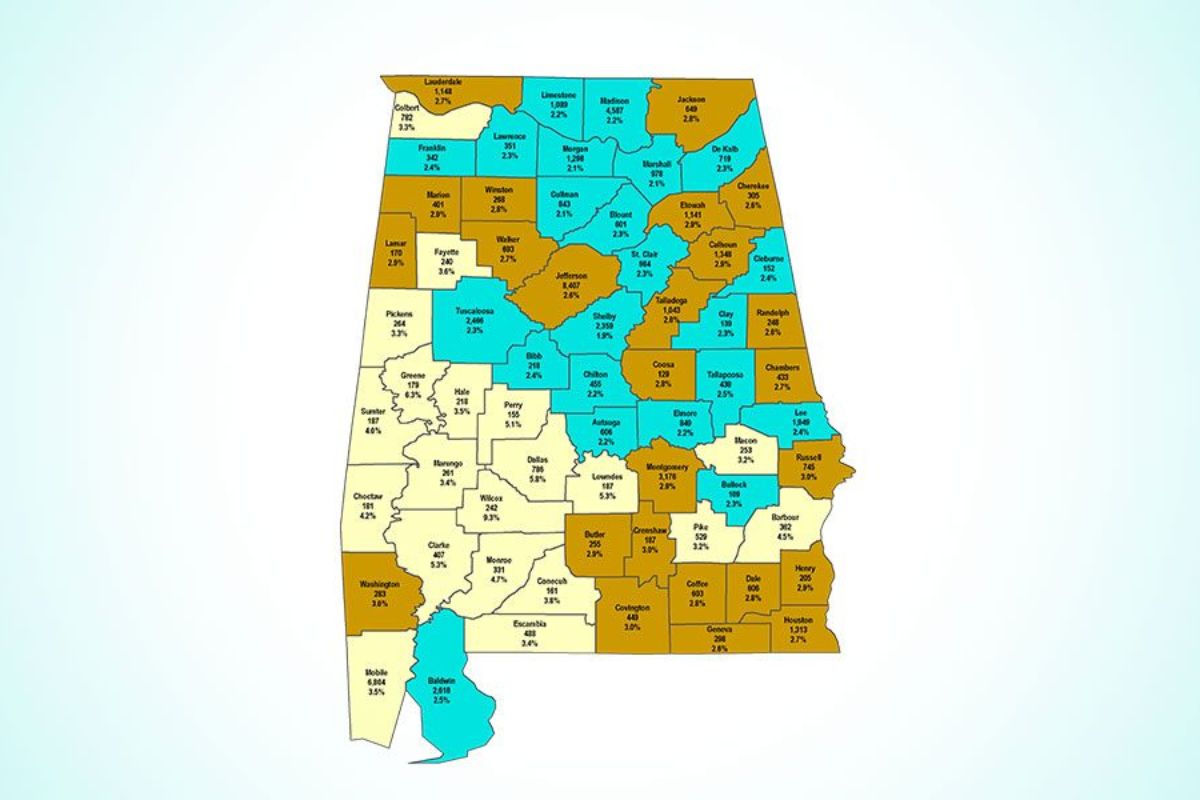Alabama’s Labor Force Rate Stagnant: MONTGOMERY, The labor force rate in Alabama has remained at a stagnant 57.4%, prompting questions about the underlying factors influencing this trend.
Factors such as labor force participation among prime-age workers, the correlation between the unemployment rate and workforce dynamics, and the implications of job growth alongside regional variations raise concerns that merit closer examination.
By delving into these aspects, a clearer understanding of the complexities shaping Alabama’s labor force rate can be achieved, shedding light on the current state of the state’s workforce dynamics.
Labor Force Participation and Prime-Age Workers
The labor force participation rate in Alabama, particularly among prime-age workers aged 25-54, has shown a consistent trend of stability and slight growth, as reported by the Alabama Department of Labor for January 2024.
At 57.4%, the overall labor force participation rate remained steady, while prime-age workers experienced a marginal increase to 78.6%, signifying a positive trajectory. Secretary Fitzgerald Washington noted this advancement, emphasizing the significance of more than three-quarters of prime-age individuals being actively employed.
Over the year, the prime-age participation rate has seen notable progression, climbing by nearly a full percentage point from the previous year’s 77.7%. This growth in prime-age worker participation is seen as a vital contributor to the state’s economic vitality.
The data reflects a promising trend in Alabama’s labor market, indicating a favorable environment for prime-age individuals to engage in the workforce, which bodes well for the state’s overall economic health.
Unemployment Rate and Workforce Dynamics
Alabama’s labor market, characterized by a marginal increase in the unemployment rate for January 2024, is indicative of shifting dynamics in workforce participation. The state’s preliminary, seasonally adjusted unemployment rate of 2.9% marks a slight uptick from December 2023’s revised rate of 2.8% and a notable increase from January 2023’s rate of 2.4%.
This translates to 66,591 unemployed persons in January 2024, up from 64,101 in December 2023 and 53,887 in January 2023. On a positive note, the number of employed individuals in Alabama grew by 31,157 over the year, reaching 2,261,270. The civilian labor force also expanded, welcoming 43,861 more participants to reach a total of 2,327,861.
These statistics suggest a complex interplay of factors influencing Alabama’s labor market, warranting further scrutiny into the underlying workforce dynamics driving these trends.
Job Growth and Regional Variation
Amidst the evolving landscape of job growth and regional variation in Alabama’s labor market, a nuanced analysis reveals distinctive patterns and implications shaping the state’s economic landscape. Wage and salary employment in Alabama experienced a positive upturn, with an increase of 38,300 jobs, bringing the total to 2,166,500. Notable job gains were observed in sectors such as government (+10,400), private education and health services (+9,100), and manufacturing (+5,500), reflecting a diverse growth trajectory.
Secretary Washington’s optimistic outlook underscores the trend of employers actively creating new job opportunities and entrusting them to the state’s dedicated workforce. The varying county and city-specific unemployment rates further highlight the regional disparities within Alabama’s labor market. Shelby County stood out with the lowest rate at 2.5%, while Wilcox County reported the highest at 10.5%. Major cities like Homewood (2.0%) and Vestavia Hills (2.1%) boasted the lowest unemployment rates, contrasting with Selma (8.2%) and Prichard (6.6%), which faced higher levels of unemployment.
These regional variations underscore the complex dynamics influencing job growth and economic stability across Alabama.
News in Brief
Alabama’s labor force rate remains stable at 57.4%, prompting inquiries into key factors shaping this trend. Analysis reveals promising growth in the labor force participation rate among prime-age workers, reaching 78.6%, signaling economic vitality. The unemployment rate, slightly increasing to 2.9%, reflects evolving workforce dynamics, with notable job gains in sectors like government, private education and health services, and manufacturing.
Secretary Fitzgerald Washington highlights employers creating new opportunities for the dedicated workforce. Regional variations, evident in county and city-specific unemployment rates, showcase complexities within Alabama’s labor market. Shelby County boasts the lowest rate at 2.5%, while Wilcox County faces the highest at 10.5%, emphasizing the nuanced landscape of job growth and economic stability.
ALSO READ: Alabama Judge Strikes Down Small Business Reporting Rule
Our Reader’s Queries
What is the participation rate in Alabama?
Explore Alabama Job Terminations Info: December sees a boost in labor participation to 57.2%. Prime-age worker percentage rises by 0.4 points to 78.5% annually. (Note: “Click here” has been omitted for brevity.)
What is the labor force participation rate percent?
The participation rate is the proportion of the population that is currently employed or actively seeking employment. In simpler terms, it represents the percentage of people who are either working or engaged in the job search process.
What does it mean if the labor force participation rate decreases?
A consistently declining participation rate indicates that the portion of the population actively employed or in active job-seeking mode is steadily decreasing. This hinders GDP growth as fewer individuals are actively contributing to the nation’s production of goods and services.

